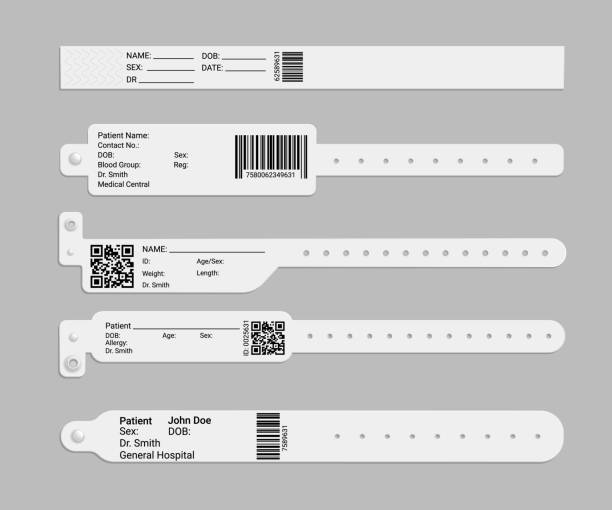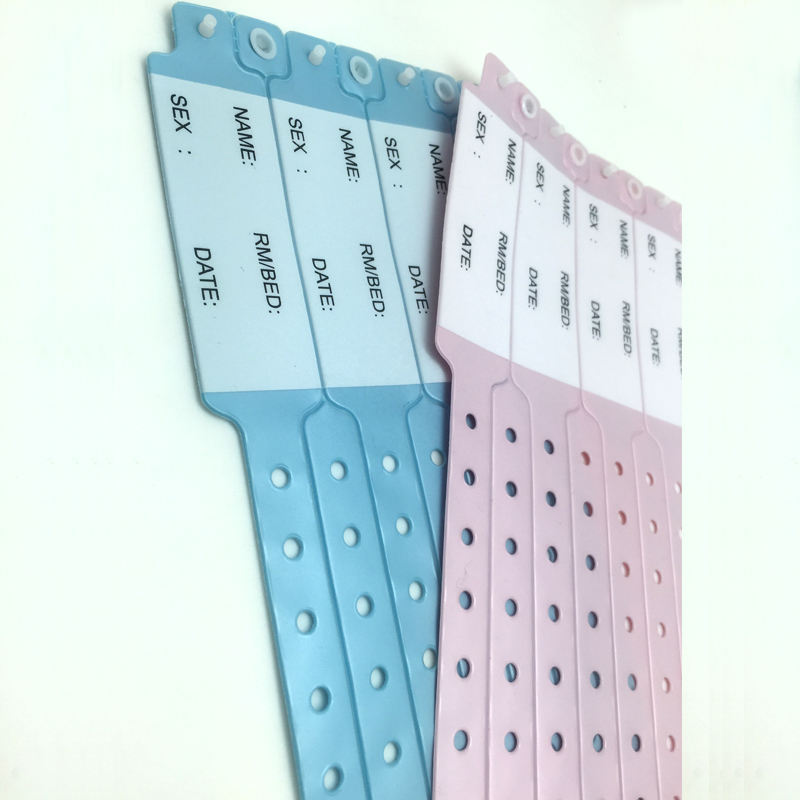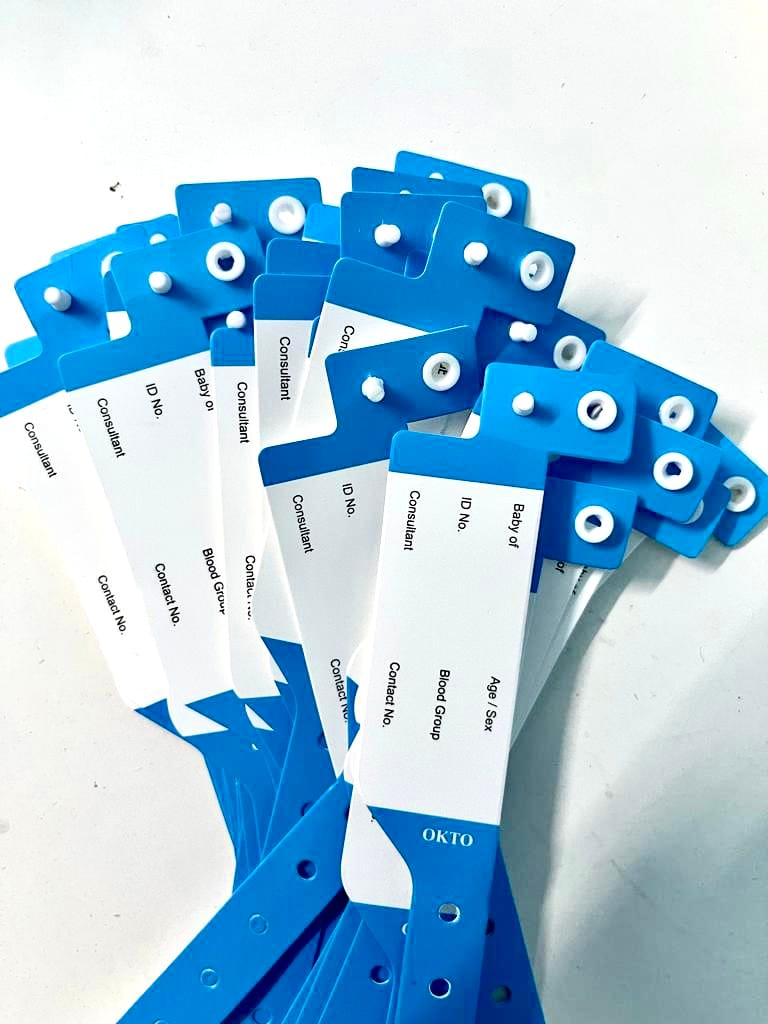Simplifying Client Care With Effective Recognition Bands
The application of efficient recognition bands is a critical element in boosting person care within health care setups. These bands not only serve to minimize the risks connected with individual misidentification yet likewise improve communication amongst clinical employees, therefore promoting a more secure atmosphere. Different types of identification bands provide to specific demands, from long lasting wristbands for adults to specialized bands for infants and essential cases. As the landscape of person recognition develops, one need to take into consideration the ramifications of these systems on general health care delivery and client outcomes. What advancements await in this critical area?
Importance of Person Identification
Making certain accurate person identification is important in health care settings, as it straight impacts the safety and high quality of care offered. Misidentification can result in major mistakes, consisting of carrying out the wrong drug, doing incorrect procedures, or miscommunicating important client details. Such mistakes not just endanger patient security but can additionally result in lawful ramifications and lowered count on medical care systems.
Reliable client recognition is fundamental to establishing a protected setting where individuals obtain tailored and ideal care. It helps with the exact documentation of clinical histories, allergic reactions, and therapy plans, ensuring that medical care providers have accessibility to important details in all times. Durable recognition protocols aid streamline interaction among medical team, enhancing partnership and reducing the danger of mistakes.

Sorts Of Recognition Bands
Recognition bands play a vital duty in preserving exact client documents and boosting safety within healthcare settings. Various kinds of identification bands are used to deal with the certain needs and demands of various person populaces.

Another kind is the ankle joint band, which is especially useful for babies and infants, making sure that identification stays intact even during treatment procedures. Specialized bands, such as those for allergy signals or fall threat indicators, offer added layers of safety by drawing immediate focus to important patient conditions.
Lately, digital identification bands have actually gained appeal, including barcodes or RFID technology that can be scanned to rapidly fetch client data. These bands streamline operations and reduce the risk of human error during individual identification procedures.
Benefits of Efficient Identification
Reliable recognition of clients via using recognition bands adds significantly to overall client security and care top quality. By making sure that each person is accurately identified, doctor can successfully match medical treatments and procedures to the proper person, decreasing the threat of mistakes. This is especially essential in settings with high individual turnover, where the possibility for misidentification is better.
Additionally, efficient identification bands improve communication among health care groups. Clear and precise client identification cultivates cooperation and makes sure that all employee understand a patient's specific needs and medical background. This communication is important for providing coordinated treatment, especially in emergency scenarios where time is essential.

Ultimately, reliable recognition through using identification bands not only safeguards patients yet additionally promotes a culture of safety and security within medical care centers (Patient Identification Band). By prioritizing precise recognition, healthcare companies can enhance end results and boost the general patient experience
Executing Identification Systems
While the importance of person recognition is well recognized, the execution of durable identification systems poses a complicated difficulty for medical care companies. Establishing effective recognition systems calls for a comprehensive strategy, including technology, employees training, and procedure combination.
First, organizations must select ideal recognition innovations, such as barcode scanning, RFID, or biometric systems. Patient Identification Band. These modern technologies should be evaluated based upon cost, use, and compatibility with existing framework. A pilot program can assist recognize possible concerns before full-blown implementation
Next, thorough training for team is essential. All workers must understand the significance of accurate individual recognition and excel in making use of the chosen modern technologies. Routine training updates and analyses can reinforce best click here for info techniques and make certain continued compliance.
Additionally, health care companies ought to create standard procedures for individual recognition throughout all divisions, improving and lessening discrepancies interaction. Normal audits can help recognize spaces in adherence to these methods.

Ultimately, an effective implementation of identification systems try here not only improves client safety however additionally promotes a society of responsibility and diligence within healthcare setups, making sure constant and trustworthy client treatment.
Future Trends in Patient Identification
Improvements in innovation are readied to transform person recognition techniques in health care setups. The combination of biometric identification methods, such as fingerprinting and face acknowledgment, is anticipated to enhance precision and security. These innovations can considerably reduce the threat of misidentification, guaranteeing that individuals obtain the right treatments and drugs.
Moreover, the execution of blockchain technology for person records is obtaining traction. This decentralized method can supply a tamper-proof and safe and secure technique for taking care of client identifications, thus streamlining access to crucial information across different doctor.
One more trend is the enhancing use mobile health applications that take advantage of QR codes for patient identification. These applications permit real-time updates and very easy access to individual information, empowering health care professionals to make educated choices quickly.
Additionally, expert system (AI) is poised to play an essential function in assessing client recognition data, determining patterns, and anticipating possible recognition errors prior to they occur.
As these modern technologies evolve, they guarantee not just to enhance client safety but additionally to boost the overall performance of health care distribution systems. Embracing these technologies will be important for future-proofing patient care techniques.
Verdict
To conclude, effective recognition bands are crucial for boosting client safety and care quality within healthcare settings. By reducing the risks related to misidentification, these bands assist in prompt and accurate information access, inevitably improving communication amongst doctor. The application of robust recognition systems not just fosters a society of safety and security but also placements healthcare institutions to adjust to future patterns in patient recognition modern technology, making certain optimal results for people in varied professional settings.
As the landscape of patient recognition develops, one should consider the implications of these systems on total medical care shipment and client outcomes.Reliable person identification is basic to establishing a safe and secure environment where individuals obtain individualized and proper care. Ultimately, focusing on reliable client recognition techniques not only promotes a society of safety and security but also contributes to boosted client end results and general satisfaction with health care solutions.
Reliable identification of people with the usage of identification bands adds dramatically to general patient safety and security and care quality. The implementation of durable recognition systems not just fosters a society of security yet also positions health care organizations to adjust to future fads in individual recognition innovation, guaranteeing ideal end results for clients in Going Here diverse professional settings.